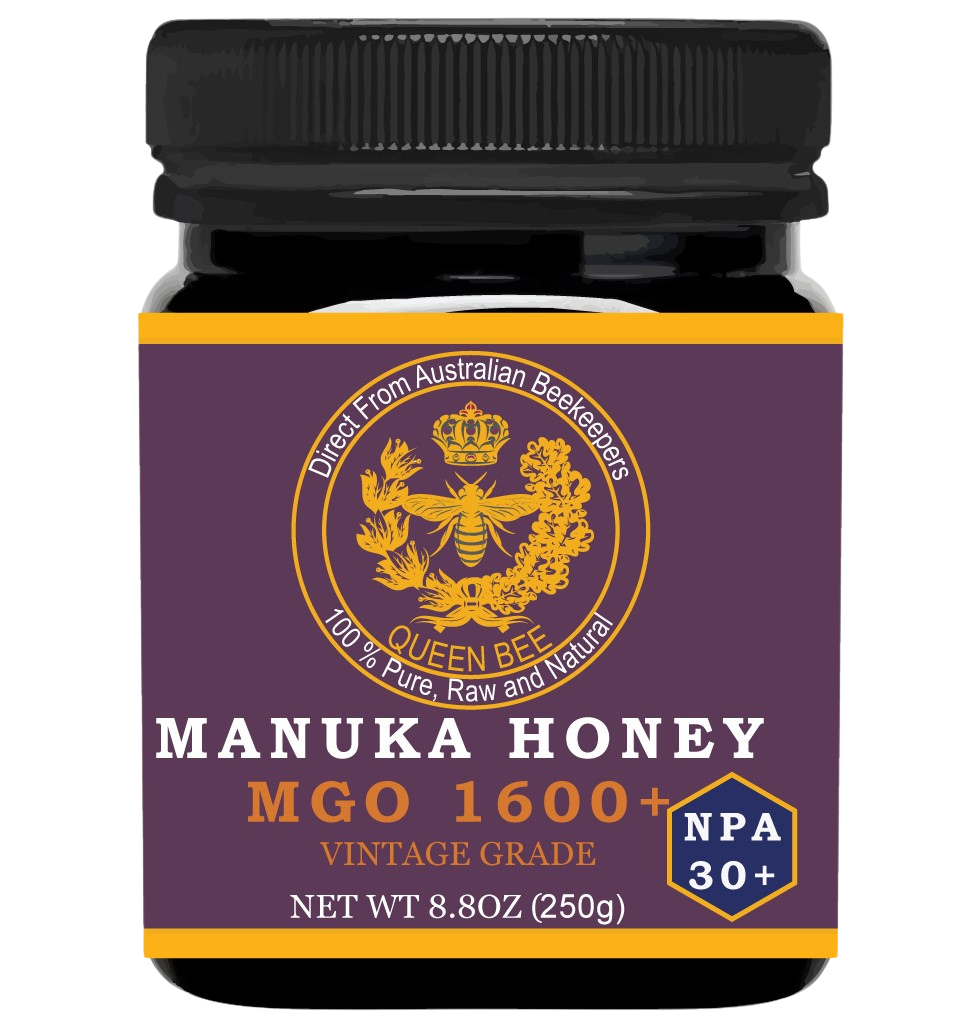
How to Choose the Best Manuka Honey: MGO, UMF, and NPA Explained
Introduction
Manuka honey is one of the most sought-after types of honey, renowned for its unique antibacterial properties and remarkable health benefits. However, not all Manuka honey is the same. The potency and effectiveness of Manuka honey depend on its grading system, including MGO (Methylglyoxal), UMF (Unique Manuka Factor), and NPA (Non-Peroxide Activity). Each of these grading systems helps you determine the quality and strength of the honey. In this blog post, we will dive into what MGO, UMF, and NPA mean and explain how to choose the best Manuka honey for your needs, ensuring you select the most effective product for your health.
What is MGO?
MGO stands for Methylglyoxal, which is the main compound responsible for the powerful antibacterial properties of Manuka honey. The higher the MGO content, the stronger the antibacterial activity of the honey. Manuka honey MGO levels range from 100+ to 1000+, with higher numbers signifying a more potent honey. If you’re looking for therapeutic benefits or a natural remedy for infections and sore throats, choosing Manuka honey with higher MGO content is essential. MGO ratings are crucial if you are using Manuka honey for health purposes like treating infections, supporting immunity, or healing wounds.
MGO Ratings Explained
Manuka honey comes in various MGO levels, and these numbers reflect the concentration of Methylglyoxal:
- MGO 100+: Ideal for daily consumption, general wellness, and as a natural sweetener.
- MGO 250+: A moderate-strength honey, perfect for supporting immune health and digestive wellness.
- MGO 500+: Suitable for more targeted health benefits like soothing sore throats and skin regeneration.
- MGO 1000+: This potent honey is recommended for serious health concerns like wound healing and treating infections.
When choosing Manuka honey, always check the MGO rating to ensure that you are purchasing the strength that meets your specific health needs.
What is UMF?
UMF stands for Unique Manuka Factor, another grading system used specifically for Manuka honey. The UMF rating reflects the combination of three key compounds in Manuka honey: Methylglyoxal (MGO), Dihydroxyacetone (DHA), and Leptosperin. These compounds work together to give Manuka honey its unique properties. UMF ratings range from 5+ to 20+, with higher numbers indicating stronger antibacterial effects and higher potency.
The UMF grading system is widely recognized and trusted in the industry, as it ensures that the honey has been tested and certified for its purity and effectiveness. When looking for Manuka honey with a UMF rating, consider the following:
- UMF 5+ to 10+: Suitable for everyday use to promote general wellness.
- UMF 10+ to 15+: Ideal for immune support, improving digestive health, and promoting overall vitality.
- UMF 16+ and above: High-quality Manuka honey that provides powerful therapeutic effects, such as antibacterial healing for wounds and infections.
What is NPA?
NPA, or Non-Peroxide Activity, is another system used to measure the antibacterial strength of Manuka honey. NPA reflects the honey’s ability to kill bacteria without relying on hydrogen peroxide, which is commonly found in other types of honey. NPA ratings typically range from 5+ to 20+ and are used for Manuka honey intended for medicinal purposes or therapeutic treatments.
While NPA and UMF are similar in that they both measure the honey's antibacterial potency, UMF is more commonly used and recognized in the market.
How to Choose the Best Manuka Honey for Your Needs
1. Determine Your Purpose
The first step in selecting the best Manuka honey is to identify the purpose for which you plan to use it. If you are looking for general wellness benefits like boosting your immune system, choosing a Manuka honey with a lower MGO or UMF rating (such as MGO 100+ or UMF 5+) will suffice. However, for more targeted health benefits such as treating sore throats, infections, or promoting wound healing, opt for Manuka honey with a higher MGO, UMF, or NPA rating.
2. Look for Certified Labels
For authenticity and quality assurance, always look for certification marks like UMF, MGO, or NPA on the label. These certifications guarantee that the honey has been independently tested for potency and purity. Certified Manuka honey from trusted brands ensures you are getting a genuine product, and it provides peace of mind regarding its effectiveness.
3. Check the Honey’s Origin
True Manuka honey is sourced from New Zealand and certain regions of Australia. To ensure you are buying authentic Manuka honey, always verify its origin. Choose honey labeled with New Zealand or Australian certification to guarantee it is pure and unblended. Authentic Manuka honey is always traceable and undergoes rigorous testing to meet international standards.
4. Consider the Price vs. Potency
As expected, higher-strength Manuka honey such as MGO 1000+ or UMF 20+ comes with a higher price tag due to its potency and medicinal benefits. When shopping for Manuka honey, compare the price with the rating to ensure you are getting value for your money. Remember, stronger Manuka honey offers greater health benefits, but it’s important to balance the cost with the intended use.
5. Read Customer Reviews
Before purchasing, reading customer reviews can provide valuable insights into the honey’s quality and effectiveness. Positive feedback from other users can help you gauge the honey’s taste, consistency, and potency. Reviews can also give you a sense of how effective the honey is for specific health issues like sore throats, digestive problems, and immune support.
Conclusion
Choosing the best Manuka honey comes down to understanding the different grading systems—MGO, UMF, and NPA—and selecting the right rating for your specific health needs. Whether you’re using Manuka honey to boost your immune system, treat infections, or support wound healing, the key is to choose high-quality, certified honey with the appropriate potency. By considering factors like the honey’s MGO or

Leave A Reply